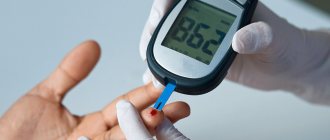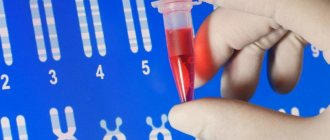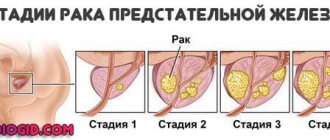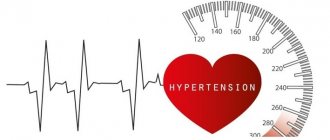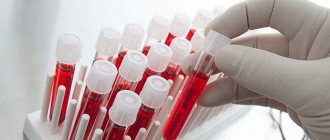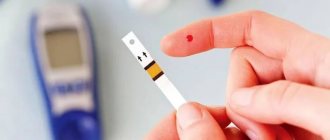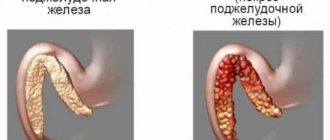Published: 08/13/2021 10:52:00 Updated: 08/13/2021
Hypoglycemia refers to a decrease in blood glucose levels to critical values. This is a dangerous condition that leads to disruption of the brain’s internal organs, and in a severe stage – to irreparable consequences or death due to hypoglycemic coma.
The symptoms of this condition are varied and depend on the cause of the pathology and the characteristics of the individual patient. Timely diagnosis and control of sugar concentrations make it possible to prevent serious complications and maintain the usual way of life.
Reasons for the decline
After eating a certain food that contains carbohydrates, the body extracts glucose from it, distributing it to all internal organs and other structures. It can be compared to fuel, without which the body’s work will be uncoordinated.
After glucose enters the bloodstream, the pancreas begins producing a special hormone - insulin, which is involved in extracting energy from glucose.
In order to determine how to achieve an increase in sugar, you first need to understand what values are considered acceptable. The normal level of the substance in the body is 3.7 to 5.5 mmol/l on an empty stomach. You can find out what your sugar level is by using a glucometer or taking a blood test.
There are actually not so many reasons for a drop in glucose levels in the body.
Taking certain medications
Most cases of decrease are diagnosed due to the concomitant development of diabetes mellitus and the introduction of medications, especially Insulin, sulfonylureas, which are used to reduce glucose levels.
The development of hypoglycemia occurs against the background of intensive therapy aimed at maintaining sugar levels in the body or in the absence of control over the amount of such a substance. Provoking factors are: non-compliance with food intake, chronic kidney disease accompanying diabetes mellitus.
Triple therapy for type 2 diabetes
If two-component therapy is ineffective, another, third hypoglycemic drug is added within 2-3 months. It could be:
- an oral drug belonging to a different class of hypoglycemic agents than the first two components of the treatment regimen;
- insulin;
- injectable exenatide.
Drugs from the thiazolidinedione group are not recommended as a third drug in the regimen. Thus, data from the American Endocrinology Association indicate an increased risk of myocardial infarction in patients taking roxiglitazone. Therefore, it is recommended to be prescribed only to those patients who cannot control their glucose levels with other drugs.
In patients at high risk for cardiovascular disease, reducing HbA1c levels to 6% or below may increase the risk of cardiovascular disease. Thus, an observation of a group of 44,628 patients conducted by American scientists led by Danielle C. Colayco showed that patients with an HbA1c level of less than 6% had cardiovascular problems 20% more often than patients with an average HbA1c level 6–8%.
Published in Diabetes Care, 2011
An experiment conducted by the ACCORD (Action to Control Cardiovascular Risk in Diabetes) research group showed that a drop in HbAc1 levels below 6% in patients at risk led to an increase in five-year mortality from myocardial infarction.
Data from researchers led by Gerstein HC, published in The new England journal of medicine, 2011
Another well-known thiazolidinedione, pioglitazone, has also received alarming information about an increased risk of developing bladder cancer with its use. The American Drug Regulatory Association (FDA) does not recommend prescribing pioglitazone to patients with a history of bladder cancer.
GLP1 receptor agonists have a different mechanism of action from other hypoglycemic drugs. They mimic endogenous incretin GLP-1 and thus stimulate glucose-dependent insulin release. In addition, GLP1 receptor agonists help reduce glucagon levels.
The combination of exenatide, the best-known drug in this group, with one or two oral medications (for example, metformin and/or sulfonylureas) is attractive for its simplicity and high effectiveness.
Symptoms of hypoglycemia
The decrease in sugar in the bloodstream occurs gradually or develops sharply. The clinical manifestations of hypoglycemia depend on the rate of decrease in the volume of the substance. Among the characteristic symptoms of the condition:
- anxiety syndrome, fear;
- increased irritability, aggression, apathy towards other people;
- general malaise, weakness, rapid fatigue;
- increased sweating;
- development of arrhythmia;
- trembling of hands and feet;
- impaired coordination of movement and speech;
- pale skin;
- nausea and vomiting syndrome;
- headaches, dizziness;
- impaired sensitivity of the tongue and lips.
In the absence of first aid and further treatment, the general condition gradually worsens, and a complication such as hypoglycemic coma occurs. The latter is characterized by loss of consciousness, severe muscle hypotonia, pronounced pallor of the skin, increased sweating, and convulsive syndrome.
When nocturnal hypoglycemia occurs due to incorrect administration of the hormone insulin, the following clinical picture is observed:
- nightmares in sleep, screaming in sleep;
- increased sweat production;
- feeling of lack of sleep, malaise after waking up.
With the long-term development of diabetes mellitus, experienced diabetics do not have obvious symptoms of impending hypoglycemia. Although the patient himself may not notice them, they are visible to others: the diabetic becomes irritable or, on the contrary, lethargic.
Pharmacotherapy for type 2 diabetes
Early initiation of pharmacotherapy for type 2 diabetes helps improve glycemic control and reduces the likelihood of long-term complications. As for the question of how to treat type 2 diabetes and what specific drugs to use, everything will depend on the chosen treatment regimen.
Diabetes mellitus type 2 (DM 2) is characterized by hyperglycemia, which develops as a result of a combination of disorders, including:
- tissue insulin resistance;
- insufficient secretion of insulin;
- excessive or inadequate secretion of glucagon.
Poorly controlled type 2 diabetes is associated with microvascular and neuropathic complications. The main goal of treatment for patients with type 2 diabetes is to eliminate symptoms and prevent or at least prolong the development of complications.
When to see a doctor
In some cases, you may not need to see a doctor if your blood sugar levels drop. This applies to cases when hypoglycemia occurs against the background of temporary provoking factors, after the elimination of which the volume of the substance in the body is normalized:
- after intense physical activity;
- after emotional stress;
- after a cool shower;
- if you have bad habits;
- when using certain medications, for example, hormonal ones;
- during the premenstrual period;
- after eating a meal rich in carbohydrates.
If, even after eliminating the causative factor, the symptoms do not disappear, and, moreover, the attacks recur several times, it is necessary to visit a doctor who, based on the results of a comprehensive diagnosis, will make the correct diagnosis and prescribe treatment.
Treatment of hypoglycemia
Therapy for low blood sugar is determined taking into account the cause of the development of this condition. In most cases, conservative treatment is required. The operation is performed to remove insulin-producing tumor-like neoplasms.
In the preoperative period, it is necessary to take certain medications that reduce the production of insulin by the tumor. Among these is Diazoxide.
First aid for a person with low blood sugar
You can eliminate the symptoms of hypoglycemia in just 2-3 minutes. Eating sugar in any form helps normalize blood sugar levels. This could be candy, a glucose tablet, fruit juice, or milk containing lactose and milk sugars. Also, as first aid, you can drink plain water with the addition of 2 tbsp. Sahara.
If you are predisposed to developing severe episodes of hypoglycemia, doctors recommend purchasing Glucalon and always having it on hand. The drug refers to protein hormones that are produced by the pancreas. The attack stops within 5-15 minutes after injection of the medicine.
Drugs and medications
Individuals who have diabetes throughout their lives are likely to experience symptoms of hypoglycemia. Therefore, patients should always have on hand certain medications that help stop the attack and eliminate the unpleasant symptoms of the condition. First of all, these are glucose tablets.
Prevention of hypoglycemia
To prevent a decrease in the amount of sugar in the body, you need to review your diet. There are some foods that promote this condition. So, if you have an increased risk of developing hypoglycemia, you should limit your consumption of:
- onions, cabbage, asparagus, zucchini, celery, cucumbers;
- berries (blueberries, cherries, cranberries), apples with sour and sweet and sour taste, grapefruits, oranges;
- buckwheat, pea porridge;
- salmon, mackerel, sardines;
- beef, poultry, rabbit;
- seasonings such as cinnamon, cloves, turmeric;
- green tea, chicory.
Preventive recommendations include maintaining a healthy lifestyle, quitting smoking and drinking alcohol – factors that disrupt the functioning of the pancreas. It is worth excluding emotional overstrain and stress, which does not have the best effect on overall health.
Regular physical activity will help normalize sugar levels in the body. Maintaining an active lifestyle is the key to rapid glucose consumption and lower blood sugar. You can visit the pool, run in the morning, do cycling, gymnastics, and yoga.
What to do?
“If symptoms of hypoglycemia occur and blood sugar drops below 2.8 mmol/l or if blood glucose is detected below 2.2 mmol/l, even without complaints, a quick intake of easily digestible (fast) carbohydrates is necessary,” notes Oksana Dyukareva.
The most suitable products for quickly replenishing blood glucose, says the endocrinologist, are 3-5 teaspoons of sugar, 1.5-2 tablespoons of honey or jam, 100-200 ml of fruit juice or other sugar-containing drinks.
“I recommend telling your loved ones about the possibility of this condition so that they can quickly help you before you lose consciousness. If consciousness is impaired, it is possible to administer 1 mg of glucagon intramuscularly or subcutaneously (purchase is possible at a pharmacy), call a doctor,” advises Oksana Dyukareva.
With timely elimination of hypoglycemia, the prognosis is favorable, warns the endocrinologist. But it is always better to prevent this condition. From the first day of diagnosis of diabetes, you should always keep fast carbohydrates with you in sufficient quantities. Also, a person with such a diagnosis should carefully monitor the organization of his diet - one must not forget about timely meals. In addition, you should monitor your blood sugar with a glucometer. And also, advises Oksana Dyukareva, it is necessary to plan sports activities, as well as other physical activity that may require additional energy expenditure - it is important that the body has enough reserves to support such tasks. And, of course, it is always necessary to discuss treatment methods and the possibility of hypoglycemia while taking your glucose-lowering medications with your doctor.
Possible consequences of low blood sugar
If a person does not suffer from diabetes, a constant decrease in the amount of sugar in the body has a negative impact on the functioning of the pancreas. Such strains are stressful for the organ, which leads to increased production of the insulin enzyme to correct sugar levels.
In the setting of diabetes mellitus, hypoglycemia increases the risk of developing acute and chronic complications. Among the acute ones is the onset of hypoglycemic coma, which, if not treated in a timely manner, leads to death. Other negative consequences of hypoglycemia that develops with diabetes mellitus include:
- visual impairment in the form of cataracts, glaucoma, blindness;
- the development of gangrenous changes that can cause amputation of a certain part of the body;
- development of renal failure;
- development of atherosclerotic changes;
- heart attack, stroke.
Recommended video:
In any case, if you experience warning symptoms indicating a decrease in blood sugar levels, you should consult a doctor. Self-medication in this case is unacceptable. In addition, if you neglect to visit a specialist, you can cause additional health problems that require other specific therapy.
The number of patients with diabetes mellitus (DM) in Russia as of January 2008, according to the State Register, amounted to 2.83 million [1]. Meanwhile, data from control and epidemiological studies indicate that the real prevalence of diabetes is 2-3 times higher than the registered one. The need for active screening examination and timely identification of patients with diabetes is determined by the fact that by the time of diagnosis, about half of patients have at least one of the complications of diabetes.
For several decades, the diagnosis of diabetes was based on fasting plasma glucose (FPG) and 2 hours after 75 g of glucose (PPG). When developing diagnostic criteria for diabetes, the first Expert Committee on the Diagnosis and Classification of Diabetes in 1997 took into account the results of studies examining the association of the development of retinopathy with glucose levels. The level of glycemia (FPG ≥126 mg/dL and PPG ≥200 mg/dL) was determined, below which the incidence of retinopathy was minimal, and above which it increased in linear progression [2].
The International Diabetes Federation (IDF) in 2005 proposed the following recommendations for the diagnosis of type 2 diabetes [3]:
- use blood plasma glucose levels, preferably on an empty stomach;
- if FPG levels are detected ≥5.6 mmol/l (≥100 mg/dl) and <7.0 mmol/l (<126 mg/dl), an oral glucose tolerance test (OGTT) should be performed;
- if random screening reveals a glucose level of ≥5.6 mmol/l (≥100 mg/dl) and <11.1 mmol/l (<200 mg/dl), the test should be repeated or an OGTT performed;
— when diagnosing, you should be guided by WHO criteria (1999) (FPG and/or OGTT).
In January 2010, the American Diabetes Association (ADA) first proposed using a glycated hemoglobin (HbA1c) level ≥ 6.5% as a diagnostic criterion for diabetes [4].
An international expert committee has already put forward this proposal, but it was rejected due to the lack of standardization of the method for conducting this analysis. Currently, the HbA1c test method is highly standardized and the results of its determination can be applied everywhere. This diagnostic test is performed according to a method certified by the National Glycohemoglobin Standardization Program (NCSP) and is standardized in accordance with the reference analysis in the Diabetes Control and Complications Trial (DCCT). Determination of HbA1c as a diagnostic criterion for diabetes, according to the authors, is more convenient (it does not need to be determined on an empty stomach) and is less susceptible to the influence of temporary factors such as stress or concomitant diseases.
The main issue in the treatment of patients with type 2 diabetes is treatment tactics. Considering that the main pathogenetic factor and triggering point underlying the complications of diabetes is hyperglycemia, it is necessary to clearly determine which indicators of carbohydrate metabolism should be focused on when choosing therapy and set their target values. At the end of the 20th century, several large controlled studies demonstrated that intensive glycemic control can significantly reduce the risk of development and progression of microvascular complications. These studies focused on lowering HbA1c levels, with additional consideration of fasting plasma glucose levels. The results of the British prospective study - UKPDS (United Kingdom Prospective Diabetes Study) [5], which included 3642 patients with type 2 diabetes from 22 UK clinics, showed the following. The tactics of intensive control of blood glucose levels, which resulted in a decrease in HbA1 levels by an average of 0.9% (decrease in HbA1c levels from 7.9 to 7.0%), with a follow-up period of up to 10 years, led to a decrease in the risk of developing any complication or deaths associated with diabetes by 12% (p=0.029); microangiopathy - by 25% (p=0.0099); myocardial infarction (MI) - by 16% (p=0.052); extraction of diabetic cataracts - by 24% (p=0.04); development of diabetic retinopathy (DR) over 12 years - by 21% (p=0.015); microalbuminuria (MAU) for 12 years - by 33% (p=0.000054).
The results of the DCCT study [6] also convincingly proved that strict and constant glycemic control (average HbA1c level of about 7% for 6.5 years) is the main prevention of the development and progression of microvascular complications and reduces the risk of developing MAU by 39%, proteinuria - by 54%, neuropathy - by 60%. In patients without DR, intensive therapy with frequent measurement of blood glucose reduced the risk of developing this complication by at least 34%, and maximum by 76%, depending on the initial severity of DM. In the presence of DR at the beginning of the study in the group of patients receiving intensive insulin therapy, the risk of progression of retinopathy was 54% lower than in patients receiving traditional therapy. The main difference between intensive care was maintaining the glycemic level as close as possible to the level of a healthy person, namely, before meals - no higher than 6.7 mmol/l, 1 hour after meals - no higher than 10 mmol/l, after 3 hours - no higher than 4 .0 mmol/l.
The results of these fundamental studies convincingly proved the advantage of intensive glycemic control in patients with diabetes in preventing the development and progression of microvascular complications. Analysis of the relationship between the degree of compensation of carbohydrate metabolism and the development and progression of macrovascular complications still remains the main goal of many international studies.
The results of a meta-analysis conducted by C. Stettler et al. [7] confirmed that improving glycemic control significantly reduces the incidence of macrovascular complications in patients with type 1 and type 2 diabetes. The relevance of this problem is determined by the fact that the main cause of death in patients with diabetes is cardiovascular diseases (CVD), the prevalence of which in patients with type 2 diabetes is 2-4 times higher than that among people without diabetes. Undoubtedly, treatment tactics for patients with diabetes should be aimed at reducing the risk of atherosclerosis, CVD, and mortality from MI as much as possible. However, intensive glycemic control, in which the goal of treatment is to achieve blood glucose levels close to those of a healthy person, is associated with an increase in the incidence of hypoglycemic conditions. Thus, according to the UK Hypoglycaemia Study Group [8], 38% of patients with type 2 diabetes receiving sulfonylurea drugs experienced “mild” hypoglycemia. In 7% of patients during this therapy, the development of severe hypoglycemic conditions was described, in 14% there was a decrease in blood glucose levels of less than 2.2 mmol/l.
The development of hypoglycemia and sharp fluctuations in blood glucose levels are accompanied by the development of myocardial ischemia [9]. When analyzing the degree of body weight gain and the nature of hypoglycemic conditions in the DCCT study, the hypothesis of so-called defensive snacking was put forward: fearing hypoglycemic conditions and wanting to prevent them, patients begin to increase their carbohydrate intake, which ultimately leads to an increase in body weight. Thus, during the first year of the study, 29 patients receiving insulin and noting the presence of severe hypoglycemia experienced an average weight gain of 6.8 kg, which was 2.2 kg more than in patients not experiencing such episodes ( p<0.05) [10].
The tactics of intensive treatment of diabetes involve achieving target parameters of carbohydrate metabolism with the gradual use of all available drugs for the treatment of diabetes, including insulin, as well as mandatory patient education and regular self-monitoring of glycemia. The 4th edition of the algorithms for specialized medical care for patients with diabetes from the Ministry of Health and Social Development of the Russian Federation [1] defines target values for the main indicators of carbohydrate metabolism in type 1 and type 2 diabetes.
Indicators of control of carbohydrate metabolism (compensation criteria) for type 1 and type 2 diabetes [4]:
These values are also criteria for compensation of carbohydrate metabolism and reflect general recommendations for the initiation and subsequent treatment of diabetes. Less stringent targets apply to children, adolescents and older adults with a life expectancy of less than 5 years. At the same time, in the absence of complications of diabetes and with a high life expectancy, as well as in pregnant women, glycemic target values may be more stringent.
One of the main indicators that determine the state of carbohydrate metabolism is HbA1c. This is an integral indicator of the state of carbohydrate metabolism for the 8-12 weeks preceding its determination [11]. Thus, it is possible to translate HbA1c levels to mean glucose levels. The association of HbA1c with mean glucose levels has been established in a number of large studies. From this, mean glucose levels were calculated in relation to HbA1c levels.
The IDF has proposed the following recommendations regarding HbA1c [3]:
— maintaining the HbA1c level according to DCCT less than 6.5% should reduce complications to a minimum;
— it is necessary to ensure compliance with the recommended lifestyle of patients and training; titrate drug doses to achieve the target HbA1c level of 6.5% [2];
- if target HbA1c levels cannot be achieved, any improvement is an advantage;
- In some cases, the strictness of the treatment regimen with insulin or sulfonylureas should be relaxed, in which accurate achievement of treatment goals may increase the risk of increased episodes of hypoglycemia;
- Equivalent target FPG levels are <6.0 mmol/L (<110 mg/dL) before meals and <8.0 mmol/L (<145 mg/dL) 1-2 hours after meals.
However, it should be remembered that there are some limitations to the use of HbA1c as an indicator of glycemic control [11]. HbA1c values can be falsely altered by any condition that affects the average lifespan of red blood cells. Uremia, bleeding or hemolysis, hemoglobinopathies cause a false decrease in the result; blood transfusions naturally distort the result; in case of iron deficiency anemia, pregnancy, a false increase in the result of determining glycated hemoglobin is observed. This should be taken into account when the results of HbA1c determination do not correspond to the clinical situation of a particular patient. HbA1c is not a measure of glycemic variability or hypoglycemia. In patients prone to glycemic variability (especially those with type 1 diabetes or type 2 diabetes with severe insulin deficiency), the most reliable method of glycemic control is a combination of self-monitoring of blood glucose and HbA1c. Fluctuations in pre- and postprandial glucose levels have different effects on HbA1c levels. The relative contribution of glucose levels after meals is the predominant factor in changes in HbA1c when the latter values are close to the target (Fig. 1).
Figure 1. The influence of fasting plasma glucose and postprandial glycemia on the formation of HbA1c levels at different degrees of diabetes compensation [19].
In 2008, 3 largest multicenter studies were completed: ACCORD (Action to Control Cardiovascular Risk in Diabetes), ADVANCE (Action in Diabetes and Vascular Disease: PreterAx and DamicroN MR Controlled Evaluation) and VADT (the Veteran Affairs Diabetes Trial). Their goal was to determine the effect of various treatment tactics on the development of cardiovascular complications and mortality in patients with type 2 diabetes with a long duration of the disease. In this case, the target parameter determining intensive treatment tactics was an HbA1c level of less than 6.0% and 6.5%.
ACCORD is a randomized controlled trial to evaluate the effect of glycemic control on the development of cardiovascular complications and mortality in patients with an average disease duration of 10 years [12]. It included 10,251 patients with type 2 diabetes, baseline HbA1c ≥7.5%, with a high risk of developing CVD (35% of patients had CVD at the beginning of the study).
The aim of the study was to examine the feasibility of intensive treatment aimed at reducing HbA1c levels below 6.0% to reduce the incidence and risk of developing CVD compared with treatment aimed at achieving HbA1c levels between 7.0 and 7.9% (standard treatment). The primary outcome was defined as a composite of all major cardiovascular events (nonfatal MI, nonfatal stroke, or death from cardiovascular causes). During the observation period, the primary outcome was recorded in 352 patients in the intensive treatment group and in 371 patients in the standard treatment group. Hypoglycemia requiring medical attention and weight gain of more than 10 kg were observed significantly more often in the intensive treatment group (16.2%) than in the standard treatment control group (5.1%; p < 0.001). During follow-up of patients for 3.5 years, it was revealed that mortality from any causes in the intensive treatment group was significantly higher than in the standard treatment group - 1.41% per year versus 1.14% per year; p=0.04; risk ratio 1.22 (95% confidence interval 1.01 to 1.46). This led to the discontinuation of the intensive therapy regimen. At the end of the follow-up period, mean HbA1c levels were 6.5% in the intensive treatment group and 7.3% in the standard treatment group.
The ADVANCE study evaluated intensive glycemic control tactics based on the use of Diabeton MB compared with standard therapy in patients with type 2 diabetes and a high risk of developing CVD [13]. For intensive glucose control, gliclazide MB (modified release) and additionally other drugs were used, which at the discretion of the physician were required to achieve an HbA1c level of 6.5% or lower. Standard glucose control meant achieving the target HbA1c level in accordance with local guidelines for the treatment of diabetes. The main outcome measure was nonfatal stroke, nonfatal MI, or death due to cardiovascular causes.
As a result of intensive glucose control compared with standard treatment, there was a significant reduction in the incidence of microvascular complications (9.4 and 10.9%, respectively; p = 0.01). Intensive glycemic control led to a significant reduction in the risk of development and progression of nephropathy by 21% (p=0.006), MAU by 30% (p<0.001). Intensive glycemic control, compared with standard control, was associated with a 10% reduction in the relative risk of developing the outcomes included in the primary outcome measure (macro- and microvascular complications) by 10% (p = 0.01). In contrast to the ACCORD study [14], in the intensive treatment group compared with the standard treatment control group, there was a trend towards a 12% reduction in mortality from cardiovascular causes (p = 0.12).
Given the conflicting research results, the ADA, together with experts from the European Association for the Study of Diabetes, published recommendations: “A consensus algorithm for the correction of hyperglycemia in type 2 diabetes” [15]. According to this algorithm, an HbA1c level of less than 7.0% should be considered effective and safe, but it must be especially emphasized that target HbA1c levels should be individualized. In an individual patient, the goal should be to reduce HbA1c levels as close to normal as possible (around 6%), while avoiding significant hypoglycemia if possible. An indication for intensifying therapy is an increase in HbA1c levels ≥7%.
Results from a 30-year follow-up of patients with type 2 diabetes within the UKPDS (main results were obtained in 1997, but study participants continued to be examined until 2002) show that good glycemic control in the early years, especially at the onset of the disease, is maintained its significant role in the future after many years of illness. It was found that the intensive control group ultimately had lower mortality (relative risk of reducing overall mortality 13%; p = 0.007) and fewer macro- and microvascular complications (relative risk of reducing the incidence of microvascular complications - 24%, p = 0.001; MI - 15%; p=0.014). Thus, achieving complete compensation of carbohydrate metabolism, reducing HbA1c levels to less than 7% in the first years of the disease, before the development of cardiovascular complications, is necessary to prevent the risk of development and progression of macrovascular complications [16].
Daily monitoring of glycemia in patients with type 2 diabetes showed that the deterioration of carbohydrate metabolism goes through three stages, starting with an increase in postprandial glycemia (PPG), then - morning fasting glucose and ending with the development of nocturnal hyperglycemia. [17]. Monitoring fasting glucose is necessary, but it usually does not reflect the nature and fluctuations of glycemia during the day. The fasting state is only a fairly short period of time after the period of overnight fasting (Fig. 2).
Figure 2. Fluctuations in glycemia during daily monitoring of glucose levels in patients with type 2 diabetes with an HbA1c level of 7-7.9%.
Failure to control meal-related blood glucose peaks is a key factor in poor glycemic control in type 2 diabetes. Inadequate reduction in glycemia after meals leads to elevated glucose levels persisting throughout the day. This situation is largely due to the abnormal nature of postprandial insulin secretion. The absence of the early phase of food-stimulated insulin secretion is observed already at the onset of type 2 diabetes. Data from a number of studies [16] have shown that the postprandial glucose peak in type 2 diabetes is the result of a reduced, delayed nature of postprandial insulin secretion. It was shown [19] that the increase in insulin secretion within 4 hours after each meal was significantly lower (p<0.005) in patients with type 2 diabetes than in the control group (Fig. 3).
Figure 3. Postprandial insulin secretion in normal conditions and in type 2 diabetes. Baseline levels of fasting insulin secretion and 24-hour insulin secretion did not differ significantly between groups, despite higher glucose levels in patients with type 2 diabetes.
PPG is also influenced by the secretion of intestinal hormones (glucagon-like peptide type 1, etc.) and glucagon secretion. PPG induces oxidative stress, increases the expression of adhesion molecules, worsens NO-dependent vascular dilatation, and generally leads to endothelial dysfunction [20].
IDF recommendations for normalizing glycemia after meals [3]:
— hyperglycemia after meals or PPG is a risk factor for the development of complications and necessitates targeted correction;
— it is necessary to provide treatment tactics aimed at reducing glucose levels after meals in people with PPG;
— non-pharmacological and pharmacological treatments should lead to normalization of PPG levels;
- the glucose level 2 hours after eating should not exceed 7.8 mmol/l (140 mg/dl) until there is a danger of developing hypoglycemia.
PPG and the risk of developing cardiovascular diseases.
Since the completion of the DCCT study in 1995, it has been suggested that mean HbA1c levels do not fully reflect the degree of hyperglycemia and the risk of vascular complications. Several studies have been conducted to examine the effect of PPG on the risk of vascular complications.
Impaired glucose tolerance (IGT) is reflected by PPG (fasting glucose and HbA1c are only slightly elevated). Therefore, IGT can be considered as a model of isolated STH. The Honolulu Heart Study [21] established a relationship between an increase in the incidence of coronary heart disease (CHD) and an increase in glucose levels 1 hour after a challenge test (50 g dextrose load).
The aim of the DECODE (The Diabetes Epidemiology: Collaborative Analysis of Diagnostic Criteria in Europe) study [22] was to determine the risk of death from any cause depending on FPG values and 2 hours after OGTT. Baseline fasting and 2-hour post-75 g glucose (OGTT) levels were analyzed in 13 prospective European cohort studies. 25,000 patients with diabetes were examined. The mean follow-up period was 7.3 years, with data from 22,514 patients included in the final analysis; the average follow-up duration was 8.8 years. Based on the results obtained, it was concluded that the relative risk of death increases with increasing glucose levels 2 hours after OGTT (see table).
The DIS (Diabetes Intervention Study) study [23] included more than 1000 patients with newly diagnosed type 2 diabetes. The purpose of the study was to identify risk factors for the development of coronary heart disease, myocardial infarction, and death from any cause. The observation period was 11 years. Multivariate analysis showed that PPG, but not fasting glucose, was an independent risk factor for death from any cause. Significant differences in the number of deaths per 1000 people were observed when PPG was more than 10.0 mmol/l (p<0.05). In addition, a relationship was observed between the incidence of MI in patients with type 2 diabetes 11 years from the start of the study and PPG at the beginning of the study: the risk of developing MI was 40% higher in patients with PPG >10.0 mmol/l. Controlling PPG leads to a reduction in the incidence of MI and mortality from any cause.
The results of the Kumamoto study showed that PPG in patients with type 2 diabetes is closely associated with microvascular complications. An increase in PPG more than 180 mg/dL, HbA1c level more than 6.5%, FPG more than 110 mg/dL was accompanied by the progression of DR and nephropathy [24].
Based on the results of numerous studies describing the relationship between PPG and the development of complications of diabetes, in January 2008, the IDF published guidelines for the management of PPG with the following key recommendations [25].
1. The level of glucose in the blood plasma 2 hours after a meal should not exceed 7.8 mmol/l (140 mg%), but it is advisable to avoid hypoglycemia.
2. Self-monitoring of blood glucose (SMBG) should be recommended as it is currently the most practical method of monitoring postprandial glucose levels.
3. The effectiveness of treatment regimens should be monitored as needed to assess the effectiveness of therapy aimed at achieving postprandial plasma glucose targets.
4. Achieving both PPG and FPG targets is important for optimal glycemic control.
5. SMBG is currently the optimal method for assessing plasma glucose levels.
There are many non-pharmacological and pharmacological treatments available to control post-meal glycemia. Low glycemic load diets are useful for controlling post-meal plasma glucose levels. Some pharmacological drugs help to predominantly reduce PPG: α-glucosidase inhibitors, glinides, short-acting insulin, glucagon-like peptide agonists, dipeptidyl peptidase-4 inhibitors.
Meaning of glucose variability.
According to daily subcutaneous monitoring of blood glucose levels in patients with diabetes, with standard self-monitoring it is impossible to fully assess the fluctuations in blood glucose during the day, its maximum and minimum values (Fig. 4).
Figure 4. Glycemia variability during the day in patients with type 2 diabetes and healthy volunteers.
It has been found that fluctuations in glycemia lead to more pronounced oxidative stress than constant hyperglycemia [26]. Glycemic variability causes activation of oxidative stress and enhances the formation of adhesion molecules and interleukin-6 [27]. The average amplitude of glycemic fluctuations has a strong positive correlation with markers of oxidative stress activation [28]. We analyzed information on all patients aged 0 to 21 years admitted to the intensive care unit at Stanford University Children's Hospital for 13 months (from 03/01/03 to 03/31/04) [29]. Patients with diabetes were excluded from the study. The concentration of glucose in the blood plasma, its minimum and maximum levels in each patient were assessed. If there were ≥3 measurements, the glucose fluctuation index was calculated. Hypoglycemia was defined as glucose levels ≤3.6 mmol/L (65 mg/dL). Hyperglycemia was analyzed at cut-off values of 6.1 mmol/L (110 mg/dL), 8.3 mmol/L (150 mg/dL), and 11.1 mmol/L (200 mg/dL). The final analysis included 1094 patients with a mean age of 2.8 years. It was found that hyperglycemia, hypoglycemia, especially glycemic variability, were associated with longer hospital stay and higher mortality. Significant fluctuations in glucose levels had a more pronounced negative effect on fluid balance and nutritional status than stable hyperglycemia. Adverse outcomes are mediated through microvascular damage induced by high glycemic variability. To improve the prognosis and reduce the risk of deaths, the authors point out the need for careful glycemic control in intensive care patients. Glycemic variability is assessed using the “mean amplitude of glycemic excursions” indicator MAGE (mean amplitude of glycmic excursions). It is calculated as the arithmetic mean of the differences between successive peaks and drops in glycemia during daily monitoring that fall outside the standard deviation (SD). Fluctuations in glycemia after breakfast, lunch and dinner vary significantly in the same patient and can have different effects on the course of the disease.
A number of recent studies [30] have shown that glycemic variability is an independent risk factor for the development of microvascular complications. Thus, an assessment of the FPG fluctuation coefficient for 3 years in patients with type 2 diabetes aged 56-74 years and further observation of patients for 10 years showed that patients with an average and high FPG fluctuation coefficient had a risk of death from all causes. 65% higher than in patients with low FPG fluctuation coefficient (odds ratio 1.36 with 95% confidence interval from 1.07 to 1.74; p = 0.018).
At the III International Congress on Prediabetes and Metabolic Syndrome (Nice, 2009), a proposal was made to use a “sugar notebook” to monitor diabetes therapy instead of the traditional assessment of glycemic disorders based only on HbA1c levels. According to the researchers, it is necessary to monitor fasting blood glucose, PPG, glycemic variability and HbA1c levels.
Conclusion
Monitoring HbA1c levels is the most accessible and informative way to assess long-term compensation of type 2 diabetes. However, this test has some limitations that may affect its clinical use. A reduction in the risk of developing microvascular complications with a decrease in HbA1c levels has been proven, while the issue of the effect on macrovascular complications has not been resolved and continues to be discussed. A study of FPG alone does not fully reflect the quality of treatment for type 2 diabetes. It was found that PPG should also be subject to targeted correction. There is a potential relationship between high PPG and the development of vascular complications. It has been shown that glucose level variability may be an important risk factor for the development of diabetes complications.
A full range of glycemic measurements, including fasting plasma glucose, HbA1c and postprandial glucose, can provide insight into the overall disease picture when deciding on treatment.

